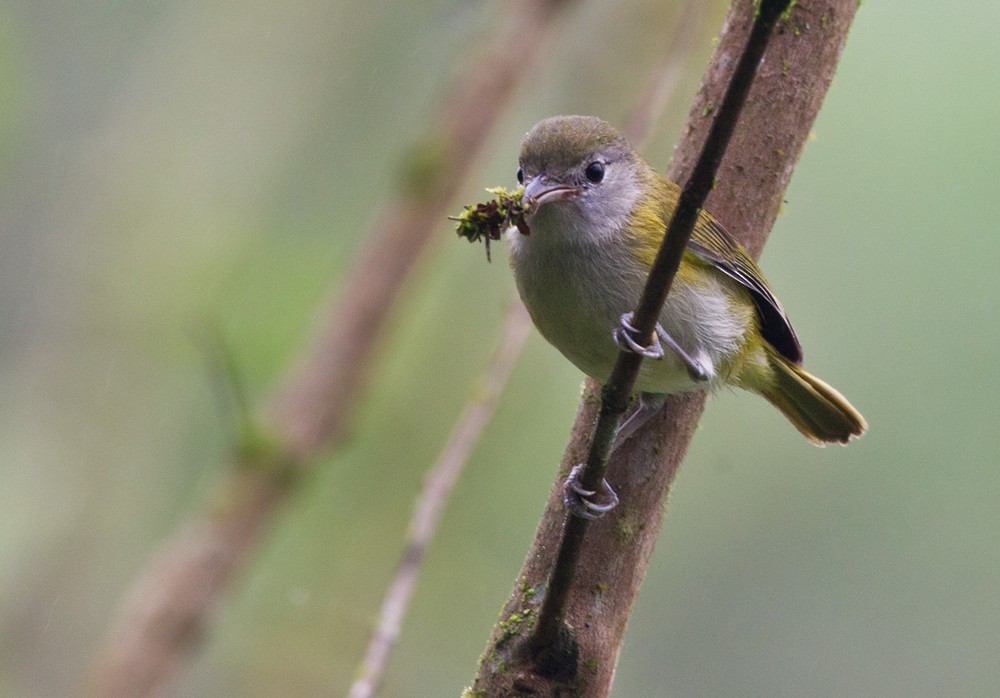Lesser Greenlet
A species of Scrub greenlets Scientific name : Pachysylvia decurtata Genus : Scrub greenlets
Lesser Greenlet, A species of Scrub greenlets
Botanical name: Pachysylvia decurtata
Genus: Scrub greenlets
Content
Description General Info
 Photo By Lars Petersson
Photo By Lars Petersson Description
The lesser greenlet (Pachysylvia decurtata) is a small passerine bird in the vireo family. It breeds from northeastern Mexico south to western Ecuador. This is a common species of lowlands and foothills up to 1,200 m (3,900 ft) altitude, where it inhabits forest canopy and edges, and the crowns of trees in tall second growth or semi-open areas. The nest is a deep cup of dead leaves and spiderwebs attached by the rim to branches 10–15 m (33–49 ft) high in a tree. The normal clutch is two brown-marked white eggs. The adult lesser greenlet is 10 cm (3.9 in) in length and weighs 9 g (0.32 oz). It has olive-green upperparts and a pale grey head with a white eye ring. The underparts are white with a yellow tinge to the breast and some olive on the flanks. Young birds are duller and brown above, and have a buff tone to the sides of the head and the breast. There are two races. Nominate H. d. decurtatus which breeds from central Panama southwards has a green crown to the head, and grey-crowned H. d. minor occupies the northern part of the bird's range. The latter subspecies was formerly given species status as the Grey-crowned Greenlet (H. minor) but the two forms interbreed extensively in central Panama and are now considered to be conspecific. Lesser greenlets feed on spiders and insects gleaned from tree foliage, They also eat small fruits and seeds. They will join mixed-species feeding flocks, and often accompany gnatcatchers, warblers and honeycreepers. The lesser greenlet has a nasal neeah-neeah-neeah-neeah call and the song is a whistled chi chi cher cher cher cher chiri cher which cheri, slower and more melodious than that of the yellow-green vireo. 
Size
11 cm
Nest Placement
Shrub
Feeding Habits
Lesser Greenlet primarily feeds on spiders, insects, and supplements its diet with small fruits and seeds. Its foraging behavior includes actively searching foliage and employing its agility to snare prey, reflecting dietary adaptability and preference for diverse food sources.
Habitat
Lowlands, foothills, forest canopy and edges, crowns of trees in tall second growth, semi-open areas
Dite type
Frugivorous
General Info
Feeding Habits
Bird food type

Fruit

 Photo By Lars Petersson
Photo By Lars Petersson Scientific Classification
Phylum
Chordates Class
Birds Order
Perching birds Family
Vireos Genus
Scrub greenlets Species
Lesser Greenlet